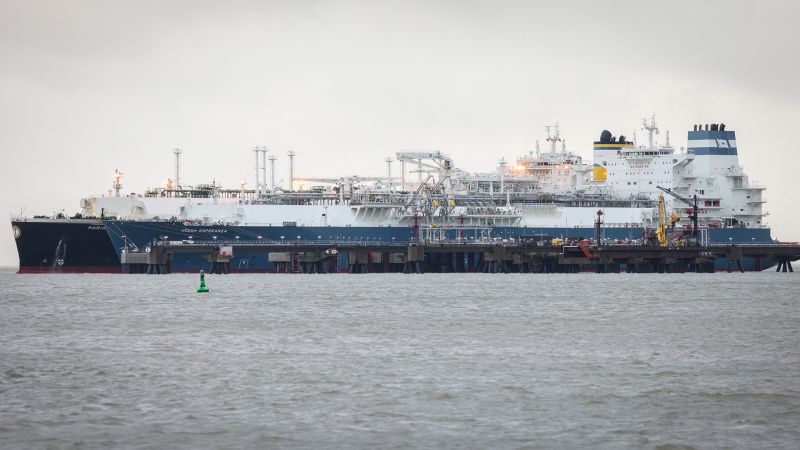World
Russia has trained navy to target Europe with nuclear-capable missiles in case of Nato conflict: Report
)
Russia has trained its navy to strike targets deep inside Europe using nuclear-capable missiles in the event of a conflict with Nato, according to a Financial Times report, citing secret files.
Maps showing targets as distant as the west coast of France and Barrow-in-Furness in the UK were part of a detailed presentation for officers from before the full-scale invasion of Ukraine, added the report.
Citing the same 29 secret Russian military files, the news outlet had previously reported that Moscow had rehearsed using tactical nuclear weapons in the early stages of a conflict with a major world power.
These documents, shown to the FT by western sources, reveal Russia’s plans for extensive strikes across Western Europe, anticipating a conflict with the West extending beyond Nato borders. Prepared between 2008 and 2014, the files include targets for missiles with either conventional or tactical nuclear warheads, highlighting the early use of nuclear strikes, reported The Financial Times.
The presentation also shows that Russia can deploy nuclear weapons on surface ships, increasing risks of escalation or accidents.
The document notes the navy’s “high manoeuvrability” allows it to conduct “sudden and pre-emptive blows” and “massive missile strikes . . . from various directions”. It adds that nuclear weapons are “as a rule” designated for use “in combination with other means of destruction” to achieve Russia’s goals, the report added.
According to The Financial Times, analysts who examined the documents found them in line with Nato’s assessment of the Russian navy’s long-range missile threat and the likely rapid escalation to nuclear use by Russia.
Russian navy ’eyes’ 32 Nato targets
The maps, created for presentation rather than operational use, highlight 32 Nato targets across Europe for Russia’s naval fleets.
William Alberque, a former Nato official now at the Stimson Center, told the news outlet that the sample was a small portion of “hundreds, if not thousands, of targets mapped across Europe . . . including military and critical infrastructure targets”.
Russia’s capacity to strike across Europe means that targets all over the continent would be at risk as soon as its army engaged with Nato forces in frontline countries such as the Baltic states and Poland, the report quoted analysts and former officials as saying.
“Their concept of war is total war,” The Financial Times quoted Jeffrey Lewis, a professor at the Middlebury Institute of International Studies at Monterey who studies arms control, as saying.
“They see these things (tactical nuclear warheads) as potentially war-winning weapons,” he added. “They’re going to want to use them, and they’re going to want to use them pretty quickly,” he said.
Tactical nuclear weapons, delivered via land, sea-launched missiles, or aircraft, have a shorter range and less destructive power compared to larger “strategic” weapons aimed at the US.
Nevertheless, they still release significantly more energy than those used on Nagasaki and Hiroshima in 1945.
Russian President Vladimir Putin has frequently used threats against Ukraine’s European allies to deter Western support for Kyiv. “They need to remember they are small, densely populated states,” he said in May.
Plans for demonstration strike
According to the report, the presentation also discusses the possibility of a “demonstration strike”— detonating a nuclear weapon in a remote area to intimidate Western nations before an actual conflict.
While Russia has not officially acknowledged this tactic, such a strike, the files say, would show “the availability and readiness for use of precision non-strategic nuclear weapons” and the “intention to use nuclear weapons”.
“They want the fear of Russian nuclear weapon use to be the magic key that unlocks western acquiescence,” The Financial Times quoted Alberque, a former director of Nato’s Arms Control, Disarmament and WMD Non-Proliferation Centre, as saying.
Fabian Hoffmann, a doctoral research fellow at the University of Oslo specialising in nuclear policy, told The Financial Times that the combination of nuclear and conventional strikes outlined in the presentation serves as a warning to adversaries to engage in negotiations as tensions escalate.
Nato estimates that member countries have less than 5% of the air defence capacity needed to protect the alliance’s eastern flank from a full-scale Russian attack. Putin claimed in June that Europe would be “more or less defenseless” against Russian missile strikes.
Dara Massicot from the Carnegie Endowment for International Peace said that Russian strategists consider nuclear weapons crucial in the early stages of a conflict with Nato due to Russia’s limited conventional resources.
“They just don’t have enough missiles,” The Financial Times quoted her as saying.
The leaked documents also reveal that Russia has retained the ability to deploy tactical nuclear weapons on surface ships, despite a 1991 agreement with the US to eliminate such capabilities. The documents list anti-submarine missiles and ship-based anti-aircraft guided missiles with nuclear warheads among these assets.
Alberque highlighted the risks of carrying nuclear weapons on surface ships, which are more vulnerable to storm damage or enemy attacks compared to strategic ballistic missile submarines.
Recent exercises ordered by Putin, including the loading of Soviet-era P-270 anti-ship missiles with nuclear warheads on a Tarantul-class corvette in Kaliningrad, suggest that the leaked documents reflect current Russian military doctrine.
Footage from these drills shows Russian troops practicing procedures for handling nuclear warheads, indicating ongoing preparations for potential use, The Financial Times reported.
With inputs from agencies










